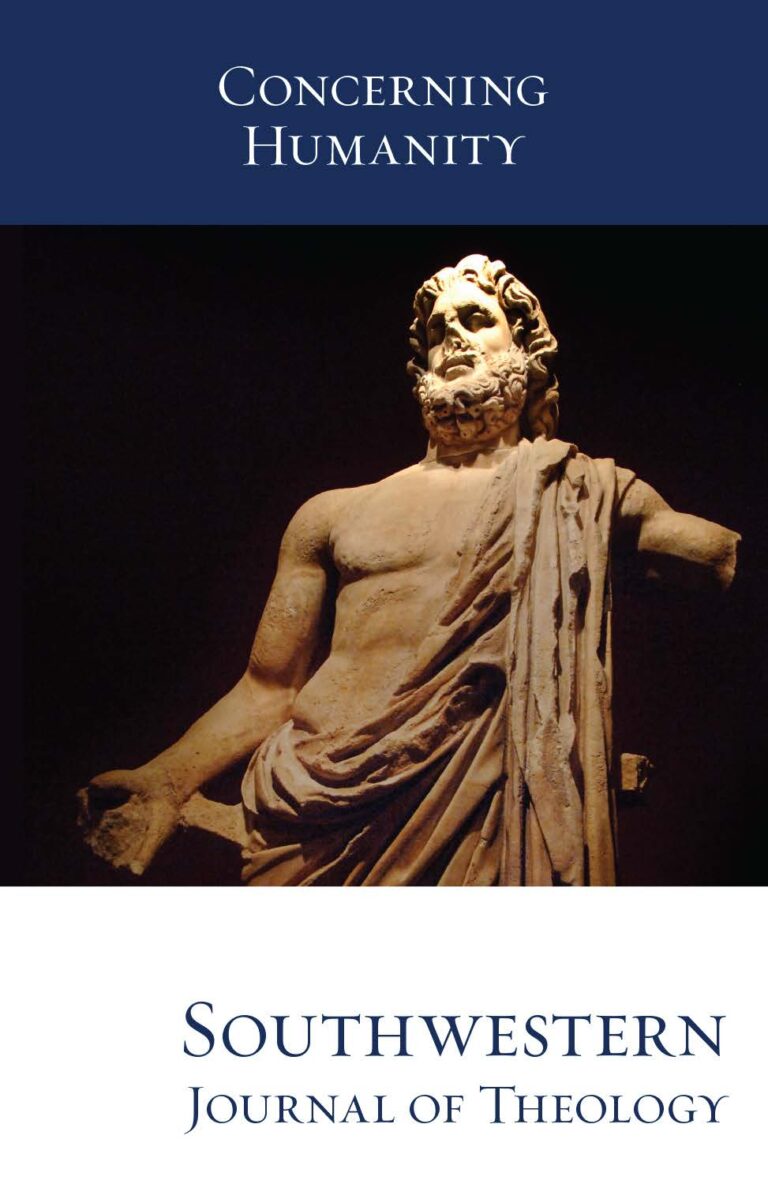
Concerning Humanity
Southwestern Journal of Theology
Volume 59, No. 1 – Fall 2016
Managing Editor: W. Madison Grace II
Rev. ed. By John C. Whitcomb. Indianapolis: Whitcomb Ministries, 2014. 230 pages. Paperback, $9.99.
John Whitcomb espouses classical dispensationalism, futuristic premillennialism, and a pretribulational rapture. In this contribution, he shares his theological conclusions regarding the culmination of world history, extending the research of his mentor and colleague, Alva J. McClain.
The book is divided into three parts: “The Destiny of the Church” (13–68), “The Tribulation and Christ’s Return” (69–139), and “The Millennium and Beyond” (141–214). Seven of the fourteen chapters are reprinted or adapted from other publications (4). An “Author Index” (215–17) and a “Scripture Index” (218–30) round out the volume.
Building on the first edition, the revised edition adds three chapters: chapter 10, “God’s People and the Future of Egypt” (147–50); chapter 13, “The ThousandYear Reign of Christ over the Earth” (195–210); and, chapter 14, “Beyond the Millennium” (211–14). The new edition also includes two of Whitcomb’s previously available charts: “Israel’s 70th Week and Christ’s Second Coming” (106) and “The Thousand-Year Reign of Christ over the Earth” (210).
Concerning the interpretation of the prophetic corpus, this book offers a number of intriguing possibilities. As an example, Whitcomb suggests that God tests the Israelites in two time periods of 490 years—the first resulting in the seventy-year Babylonian exile, and the second consisting of Daniel’s seventy sevens. He reasons, “If 490 years of disobedience had brought 70 years of punishment, is it not probable that the testing period for Israel which was announced to Daniel would cover another 490 years?” (75, italics his).
The demise of Gog from Magog in Ezekiel 38–39 comes to fruition near the middle of the tribulation (91–100). Gog’s alternate appellations include the king of Assyria/the Assyrian (Isa 10:12, 24–27; Mic 5:5–6), the northerner (Joel 2:20), and the king of the north (Dan 11:40–45). He is also the king mentioned in Daniel 8:23–25. Whitcomb suspects Russia as his domain, but sagaciously adds, “The name . . . may indeed change with the flux of history, but the general location remains fixed” (95).
Ten lines of argumentation support the notion that Ezekiel 40–48 foresees a millennial temple on planet earth (152–65). Like the Jewish animal sacrifices of antiquity, the animal sacrifices of the millennial temple have nothing to do with salvation, but accomplish a ceremonial cleansing and temporal forgiveness so that a holy God can dwell among a sinful people (194). The two witnesses of Revelation 11, Elijah and Moses, minister during the first half of the tribulation period (107–29).
Whitcomb lists three reasons why John the Baptist was not Elijah (117–18). Certain facets of the book lack balance, organization, consistency, or substantiation. Three of the chapters only span four pages each (chaps. 9, 10, 14), whereas three different chapters exceed twenty-five pages each (chaps. 1, 6, 12). Sixteen characteristics describe the millennial age, but two of them (the sixth and seventh) transpire before the millennium (203). Inconsistently, pages 107–8 assign the 1,260 days of Rev 11:3 to the first half of the tribulation, but pages 76 and 90 designate them as the last half of the tribulation. Moreover, sometimes debatable and dogmatic conclusions appear without corresponding support. For example, the twenty-four elders represent the church (197), the antichrist reigns as the seventh king/kingdom in Revelation 17 (98), the abomination of desolation refers to a statue of the beast that comes to life (88, 98), and the two olive trees of Zechariah 4 denote Joshua and Zerubbabel (62, 108).
A few points of clarification might enhance the volume. First, Whitcomb suggests that the Jews will use the tribulation temple during the millennium. Immediately after the tribulation, “the Lord will set aside those THIRTY days to purge and purify the temple for His people to use during the kingdom age” (104, emphasis original). He also anticipates a distinct millennial temple “located about ten miles north of Jerusalem” (159). Is Whitcomb proposing that the tribulation temple will serve as a makeshift temple during the millennium until the millennial temple is built?
Second, while distinguishing the church and Israel, Whitcomb implies that Christians remain partially under the Law of Moses. In his words, “The Church has been given . . . freedom from the nonnormative aspects of the Law of Moses” (65). In no way, however, is the church under the Law of Moses. The church submits to a different law, known as the Law of Christ (Gal 6:2), the law of the Spirit of life in Christ Jesus (Rom 8:2), the perfect law, the law of liberty (Jas 1:25), and the royal law (2:8).
A missed opportunity hobbles the discussion of what Nicodemus should have known about the new birth from the Old Testament (132–36). The author fails to mention the Old Testament excerpt that Jesus alludes to while talking with Nicodemus (cp. Prov 30:4 and John 3:8, 13). Furthermore, he bypasses the preeminent passage in the Old Testament concerning the new birth (Ps 87).
From cover to cover, this study of the eschaton highlights the unity of Scripture. As Whitcomb puts it, “The Bible is its own best interpreter” (32). For those interested in an eschatological treatise by a seasoned theologian, this book is full of interpretive insights and canonical correlations.





